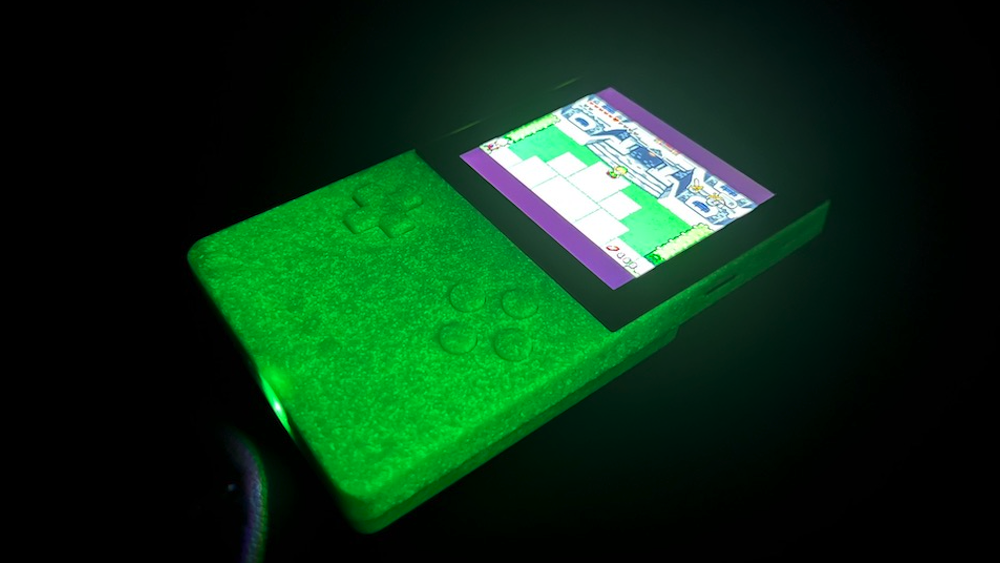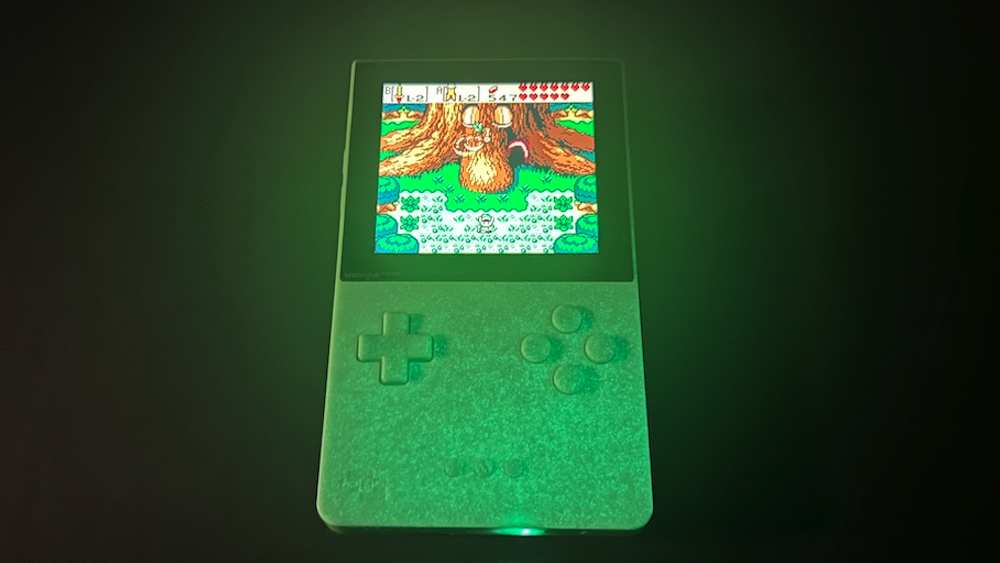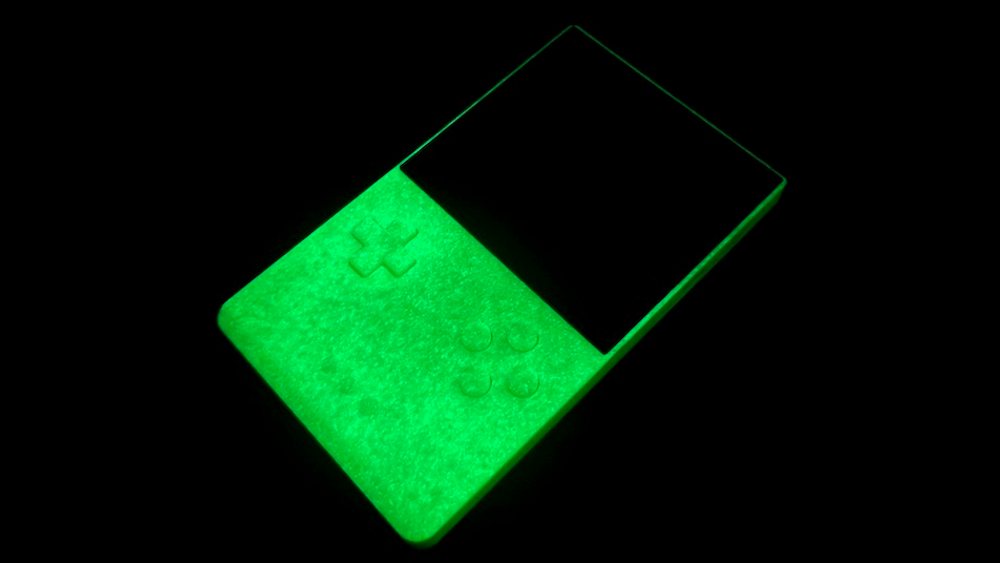Over the past decade, hardware manufacturer Analogue has made a name for itself in the retro gaming space by creating what are essentially modernized versions of beloved systems from yesteryear. Authenticity is at the heart of Analogue’s approach to offering an improved gaming experience that gels with modern technology. Aesthetically, Analogue hardware tends to pay homage to the original with sleek, understated designs. The Super Nt (SNES) and Mega Sg (Genesis) are prime examples of this, as were the black and white launch models of the Analogue Pocket, the manufacturer’s first handheld.
With the special-edition Pocket Glow, Analogue has leaned into the quirkiness and memorability of the Game Boy era from a design perspective. As you’ll see below, we would be lucky to get more gaming hardware that looks this cool.
The Pocket Glow shines before it actually shines. The shell’s pale green hue stands out and, based on my limited time with it so far, hides fingerprints and smudges better than the original black model (and most other modern handhelds). It’s an eye-catching device that captures that similar magic and originality that marked the Nintendo of the late ’90s and early aughts.
Analogue developed a proprietary plastic that it says can glow in the dark for roughly eight hours and “charges” via both natural and artificial light. That number sounds about right, as I sometimes noticed it maintained its glow in the morning. Before trying it out in a pitch-black room for the first time, I wondered if the lighting effect would be distracting. That wasn’t the case at all. Analogue did a great job calibrating the plastic to make it glimmer vibrantly without clashing with the backlit display.
Gallery
Under normal conditions, such as leaving the Pocket beneath a lamp all day, it’ll emit a smooth, pleasant glow in a darkened room. When exposed to very strong light, such as a blacklight, the Pocket Glow performs its most impressive parlor trick. Within seconds, the shell lights up like a radioactive Christmas tree.
What’s especially cool is that the Pocket’s glowing effect isn’t all or nothing. As demonstrated in the slideshow above, each spot glows separately, creating a shimmering effect that’s stunning. Though this effect dissipates in a matter of minutes, it’s a neat flourish that would’ve wowed the neighbor kid and made him as envious as I was when he showed off his translucent Nintendo 64. Game systems nowadays mostly try to blend in with our entertainment center, using a color palette largely consisting of black, white, and a splash of gray or silver. Sophistication is nice and all, but sometimes it’s cool to have a game system that doesn’t look like anything else you own.
The only downside to this lovely handheld is that you can’t buy it. Well, technically you could have, provided you placed your $250 order prior to it selling out approximately one minute after it became available (seriously). The same thing happened when the seven(!) different translucent Pockets went up for preorder last month. At the time of writing, perhaps due to the increased attention from these highly limited special editions, the standard black and white models are also sold out. You could resort to eBay for any model of Analogue Pocket, though you’ll pay exorbitant prices thanks to crummy scalpers.

Gallery
Instead of doing that, you should probably wait until the black/white models restock–or maybe Analogue will release another beautiful iteration that will be even cooler than the Pocket Glow. If you have strong nostalgia for the Game Boy era, there’s a good chance you would adore the Pocket.
For the uninitiated, the Analogue Pocket is an FPGA-enabled system, which in simplistic terms means it’s an authentic, modern Game Boy that doesn’t rely on emulation. Rather, it plays original software, as in Game Boy, GBC, and GBA cartridges.
I reviewed the Analogue Pocket for GameSpot back in 2021 and was so impressed that I wound up going on a months-long Game Boy spending spree, much to the chagrin of my wife and bank account. Kid-me shouldn’t have traded in all those carts to GameStop to buy PS2 games that I would also someday sell for increasingly diminished returns.
The Analogue Pocket has the form factor of a Game Boy Color but has four face buttons and two shoulder buttons. The screen is absolutely nothing like the one found on any Game Boy you’ve owned. It could perhaps best be described as outrageous. The 3.5-inch display offers a whopping 615 pixels per inch (ppi) and 1,600×1,440 resolution. With Analogue’s set of screen filters that can be cycled through on the fly, the Pocket accurately replicates the display of the DMG Game Boy all the way through the GBA SP. It may be blasphemous, but I’m partial to Analogue’s “remastered” filter that presents each game in its crispest and brightest possible form.

Gallery
Since launch, Analogue has periodically updated the OS to add new features such as Memories (a catalog of save states), a library that catalogs and provides basic information about your games, and support for FPGA cores. The Pocket’s active development community has built cores for a wide variety of home consoles, handhelds, and arcade games. It’s now possible to play NES, SNES, Genesis, and many, many more platforms on the Pocket’s gorgeous little display. There’s also an adapter for Game Gear cartridges and upcoming adapters for TurboGrafx-16, Neo Geo Pocket Color, and Atari Lynx. If you don’t like the sound of playing console games on a handheld, an official dock is available. The Pocket’s dock supports a variety of Bluetooth controllers, including various 8BitDo retro gamepads, official Switch and PlayStation controllers, and more.
Now, if only we could convince Nintendo to start releasing eccentric and distinct-looking hardware again. Nevertheless, this glow-in-the-dark modern “Game Boy” captures that era of coolness and pure fun exceedingly well.
Disclosure: Analogue provided the Pocket Glow to GameSpot for review.
The products discussed here were independently chosen by our editors.
GameSpot may get a share of the revenue if you buy anything featured on our site.
